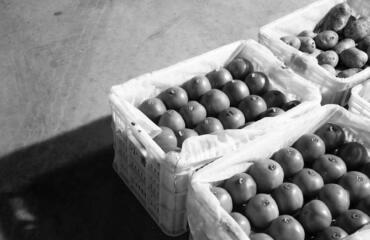In cities across China, a dwindling number of people live in urban villages. These are groups of houses are relatively old, low-rise and built in rows, so between every two lines of houses there is a narrow ‘alley’ known as a Hutong.
The urban villages are commonly referred to as ‘Hutongs’ but a ‘Hutong’ can also exist alone. In urban and rural villages, there are many Hutongs. They are essentially public lands for people to get in and out of their houses, much like the cobbled laneways around the inner-city areas of Melbourne, Australia that were built in the 19th century.
The urban village neighbourhoods are horizontal, not vertical like high-rise living. This means urban villages occupy a lot of land. As population pressures grow, the urban villages in Shijiazhuang, Hebei, are facing demolition, with their residents to be resettled and their lifestyle gone forever.
This photo essay depicts one of the original urban villages in Shijiazhuang, known as Zhentou Sanjie. Shijiazhuang is the capital and most populous city of China’s Hebei Province and lies roughly 266 kilometres southwest of the nations’ capital, Beijing.
Zhentou Sanjie’s earliest residents date back over 200 years, to the Qing Dynasty. This village hasn’t been rebuilt – like a few villages in Beijing that are largely persevered for tourists – and will soon be demolished and high-rise apartments will take its place.
Zhentou Sanjie is quite large and includes a kindergarten, which is not welcomed by villagers because it provides bilingual education; a senior centre for people to organise activities, such as chorus, dancing and playing chess and two fitness squares that are big enough for villagers to exercise and play ping-pong.
Almost every family in this village has at least one car, so there are two parking lots, as well as shops and restaurants on both sides of the main road, so you can see many delivery men riding through the village.
Villagers seem to be satisfied with their life. Many people are connected by blood relationships, so neighbours are very close to each other. Every time I went there to take photos, I would see people sitting and talking. Its environment may not be as neat and clean as some of the city’s other neighbourhoods, but people here live a rich and colourful life.
Many villagers in Zhentou Sanjie are looking forward to the reconstruction, though you can feel their sense of loss.
Ms. Li, who lived in Zhentou Sanjie for over 20 years has now moved to another neighbourhood.
“I often come back to visit my parents-in-law,” she said, “Living in this village is quite convenient because streets surround it on all sides!”
She is looking forward to the reconstruction and believes it will improve the quality of life for the residents and integrate the area more into the city, though there are certainly things she will miss.
“I live in a high-rise residential area, and only recognize a few neighbours,” she said.
“What annoys me most is I have always to care about people’s feelings towards my dogs because many people hate dogs, but in this urban village the residents know each other well and it’s easy for them to chat. Cats and dogs are free, young and old are happy, which gives me a feeling of belonging, but when the village is demolished and transformed into high buildings, that sense of belonging will definitely diminish. What a pity.”
Shop owner Mrs Kang said she had enjoyed living in the village.
“My family and friends have been living here for a long time, and we’ll move to tall buildings together soon after,” she said.
Mrs Kang said she was pleased to live in a house with a yard, but after reconstruction, she would lose a lot of fun in her private yard and she felt a sense of loss that her house will be demolished.
However, even though many have lived in this village for thirty years, they are generally positive about its reconstruction and believe ‘where there is a family, there is a home’.
Sooner or later, this urban village will transform into modern buildings, but I hope that simple and easy lifestyle will last a long time in people’s minds.
In taking these photos I was inspired by John T. Pedersen and his creative use of composition, angles and a diverse range of people and stories. I also learned from a young photographer, Semkavkvadrate, who captures a great sense of personality and vivid facial expressions in his pictures of people on the streets.
















